#First Methodist Episcopal Church
Explore tagged Tumblr posts
Text























Ohio became 17th state of the Union on March 1, 1803.
#Van Wert#B & K Root Beer Stand#Van Wert County Courthouse#Ohio#USA#17th US state#1 March 1803#First Methodist Episcopal Church#Massillon#Midwestern USA#summer 2019#landscape#countryside#cityscape#architecture#Tyler Davidson Fountain#Cincinnati#landmark#tourist attraction#Covington and Cincinnati Suspension Bridge#John A. Roebling Suspension Bridge#Columbus#Fayette County Court House#Grove City#Miami Conservancy District#US history#anniversary#travel#original photography#vacation
2 notes
·
View notes
Text

"The decision from Judge Tanya M. Jones Bosier is meant to fulfill a $2.8 million default judgment entered against the Proud Boys by a different judge in DC in 2023 to get back damages incurred by the church during the December 2020 attack.
The two-page ruling says that all the group’s interests in the “Proud Boys” trademark will be transferred to the Metropolitan African Methodist Episcopal Church and that the organization and people associated with it must first get consent from the DC church to use the mark or sell any merchandise containing it."
CNN
Associated Press
NBC Washington
#destiel meme news#destiel meme#news#united states#us news#proud boys#tw racsim#finally some good fucking news#blm movement#black lives matter#black lives fucking matter#trademark#trademark rights#black church#metropolitan african methodist episcopal church#metropolitan ame church#enrique tarrio#vandalism
436 notes
·
View notes
Text
Richard Luscombe at The Guardian:
The Proud Boys have lost control of their own name after the far-right extremist group subjected a Black church in Washington DC to a “hateful and overtly racist” attack during the violent final days of Donald Trump’s first presidency. The ruling Monday by Judge Tanya Jones Bosier of Washington DC’s superior court grants the church – the Metropolitan African Methodist Episcopal church – power over how the Proud Boys moniker is used. Bosier’s decision opens a pathway to seizing proceeds from the sale of any merchandise featuring the white supremacist group’s name, logos and insignia, too. Lawyers for the church sought the ruling to satisfy a $2.8m judgment stemming from the December 2020 attack during a rally by Trump supporters who falsely claimed that victory was stolen from him when he lost the presidential election that year to Joe Biden. Several Proud Boys members scaled a wall at the church and embarked on a rampage of vandalism that included burning a Black Lives Matter (BLM) banner. The mob included Henry “Enrique” Tarrio, a planner of the 6 January 2021 Capitol attack who was subsequently sentenced to 22 years in prison for seditious conspiracy. But he was among 1,500 people pardoned and freed when Trump returned to office in January after defeating Kamala Harris in November’s election. In a June 2023 ruling, DC superior court judge Neal Kravitz said Tarrio and fellow Proud Boys members John Turano, Ethan Nordean, Joseph Biggs and Jeremy Bertino had “acted with an evil, discriminatory motive based on race and that their conduct was reprehensible to an extreme degree” when they attacked the church.
It was one of a number of violent incidents that took place in the Washington DC area between Trump’s defeat to Joe Biden in the 2020 presidential election and the deadly January 6 attack by his supporters trying to keep him in office. Tarrio did not take part in the Capitol insurrection because he had been arrested for stealing a BLM flag in an separate assault on the Asbury United Methodist Church, one of four churches attacked by the Proud Boys on the same night. He watched the riot he had helped organize from a hotel room in Baltimore.
Here is some poetic justice, on Black History Month no less: Far-right domestic terrorist group Proud Boys lost their own naming rights to the Metropolitan African Methodist Episcopal Church in DC, which was one of the churches vandalized by the far-right group.
See Also:
Daily Kos: You’ll never guess who now controls the Proud Boys brand
Washingtonian: A Historic DC Black Church Now Owns the Proud Boys’ Name
#Proud Boys#Irony#Right Wing Extremism#Metropolitan African Methodist Episcopal Church#Tanya Jones Bosier#Enrique Tarrio#Capitol Insurrection
108 notes
·
View notes
Text
And I'll pop down to Oxford from my archaeologist's lair in Leicester!
Me: I am joining the African Methodist Episcopal Church!!!!
AME: We don't drink wine.
Me: I am joining the Church of England!!!! And also moving to England!!!
#african methodist episcopal church: we're teetotal#me: i tried my first whisky shot at a serbian orthodox church
19 notes
·
View notes
Text
The Charleston Church Shooting: Dylann Roof

*NOTE! This is a repost! And it will look familiar CAUSE IVE POSTED IT ON ANOTHER ACCOUNT!! Is it the best? No.*
—
Early life/ Prior convictions
Dylann was born April 3rd 1994 to mother Amelia and father Franklin with 2 sisters Amber and Morgan. During early childhood his parents would divorce and his father would later remarry. His stepmother accused his father of abuse. He would beg his step mother to let him live with her but she wasn’t able to. Dylann would be described to have obsessive compulsive tendencies with germs. In middle school he would stop caring about school and started smoking weed and drinking vodka. In nine years he would have attended seven schools. In 2010 he would drop out of Highschool and continue playing video games and smoking weed and drinking.
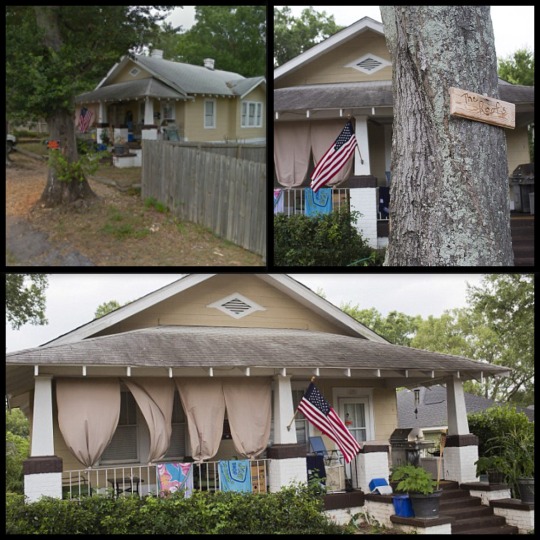
(The Roofs home)
In 2015 he was caught with an invalid prescription for suboxone at a mall to which he was banned from for a year. Later that year he was caught loitering in the mall to which they searched his car finding a forearm grip for a AR-15 semiautomatic rifle and six unloaded magazines capable of holding 40 rounds each but was let off it was legal in the state. Roofs Suboxone charge was mishandled and a system error took it as a misdemeanour instead of a felony. Which would have possibly prohibited him from purchasing the firearm.

(The flag of Rhodesia)
Later Dylann would look into the Trayvon Martin case and from an unknown article concluded Zimmerman was in the right. He then fell down a rabbit hole of black on white crime and misinformation. He then found 4chan and would find even more misinformation and hard right ideologies Dylann states he hasn’t been the same since that day. Which leads to his manifesto titled ‘The last Rhodesian’ Rhodesia being the African state founded in 1965 ran by primary Europeans and a white supremacy ideology before being abolished in 1979. The term now sticks with white supremac!sts like Dylann had became, as he also used the flag on his jacket. In preparation before the attack he looked up black churches and found the Emanuel Methodist Episcopal Church and would scout the area and ask around about mass times.
The shooting

(The Emanuel Methodist Episcopal Church)
June 15th 2015 somewhere around 8:00pm Dylann entered the church, once he did he was greeted by Rev.Pinckney and given a bible to study with. Roof was sat next to Pinckney as the study continued. As the study closed and the ending pray started Roof stood up and pulled out his Glock 41 .45 calibre handgun and began shooting. Killing Pinckney first. Then 26 year old Tywanza Sanders stood up to plead with Dylann before he said ‘I have to do it. You rape our women and you’re taking over our country and you have to go’ he then shot and k!lled Sharonda Singleton, Dr. Daniel L. Simmons, Ethel Lee Lance, Cynthia Hurd, Myra Tompson and Tywanza Sanders. Dylann would reload 5 times that day. Polly Shepherd was spared when he asked her if he shot her yet to which she replied no he then told her ‘good cause we need someone to survive because I’m gonna shoot myself and you’ll be the only survivor. He then turned the gun on himself realizing he was out of ammo. He then left the church to the surprise there wasn’t anyone outside. The next day the police confirmed the gunman was 21 year old Dylann Roof with witnesses reporting they saw him drive towards Shelby, a town close to Charleston. At 10:44am Roof was arrested at a traffic stop in Shelby where it was then confirmed he worked alone.
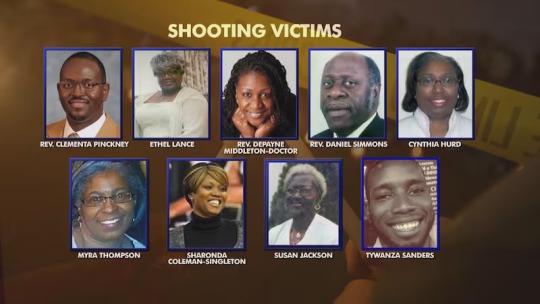
(The victims)
The Trial
Five days after the shooting the grand jury announced that Roof was being indicted for 33 federal charges.
12 counts hate crime against black people
12 counts obstructing the exercise of religion
9 counts murder using a firearm.
On June 6th Roof reportedly did not want to be trialed by jury and instead let the judge decide if he was guilty and if the death penalty was reasonable. August 23rd Roofs lawyers called the motion of death penalty unconstitutional and asked to reject the motion. On September 1st an on camera hearing was held in case of outbursts. December 7th 2016 the trial started. During a survivor statement Roofs mom collapsed as she had a heart attack. After 3 days of the trial FBI played a video on which he admitted to laughing and drinking while describing to friends how he’d shoot the church. To which his friend didn’t report to police and said he was drunk and took his keys and Glock that was on him. After 2 hours the jury found him guilty on all 33 charges. Roof wanting to plead guilty but told not to by lawyers.
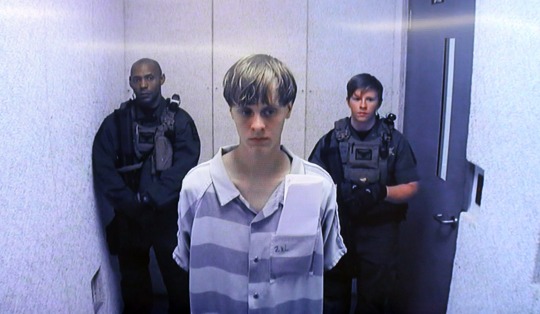
(Roof at his video hearing)
January 10th 2017 Roof was sentenced to the death penalty,death by lethal injection.
#tc community#tcc columbine#tccblr#true cringe community#tcc tumblr#dylannstormroof#info post#informative#information#eric columbine#dylan columbine#eric and dylan
197 notes
·
View notes
Text
(RNS) — The African Methodist Episcopal Church’s top officials have called for the U.S. government to halt all its funding of Israel, citing the deaths of tens of thousands of Palestinians in the Hamas-Israel war.
“The Council of Bishops of the African Methodist Episcopal Church calls on the United States Government to immediately withdraw all funding and other support from Israel,” reads a statement issued on Wednesday (Feb. 14), the 264th anniversary of the birth of the historically Black denomination’s founder, Richard Allen.
“Since October 7, 2023, in retaliation for the brutal murder of 1,139 Israeli citizens by Hamas, Israel has murdered over 28,000 Palestinians, mostly women and children. The United States is supporting this mass genocide. This must not be allowed to continue.”
The statement was signed by Bishop Adam J. Richardson, senior bishop of the denomination; Bishop Stafford J.N. Wicker, president of the bishops’ council; Bishop E. Anne Henning Byfield, chair of social action, and Bishop Francine A. Brookins, co-chair of social action.
Bishop Harry L. Seawright, the leader of the AME’s Alabama district, said in a Thursday interview with Religion News Service that he and other bishops also supported the statement, which he said reflects the denomination’s stances on social action.
“We have always tried to take a social stand against injustice, unfair treatment of all people,” he said.
Seawright said he was not aware of any other Black denominations that had adopted the same stance. Bishop Vashti McKenzie, a retired AME bishop and the president of the National Council of Churches, an organization of Protestant, Orthodox, evangelical and historic African American churches, told Religion News Service that she believed the AME Church was the first national denomination to take this step.
In January, Progressive National Baptist Convention President David Peoples declared his denomination’s stance in favor of a cease-fire at a news conference at the Lorraine Motel, the Memphis, Tennessee, site where the Rev. Martin Luther King Jr. was assassinated in 1968.
267 notes
·
View notes
Text
The Dylann Roof case- In Depth
I DO NOT SUPPORT. THIS IS INFORMATIONAL!
Pls reblog incase I get trmed!

Dylann was born April 3rd 1994 to mother Amelia and father Franklin with 2 sisters Amber and Morgan. During early childhood his parents would divorce and his father would later remarry. His stepmother accused his father of abüse. He would beg his step mother to let him live with her but she wasn’t able to. Dylann would be described to have obsessive compulsive tendencies with germs. In middle school he would stop caring about school and started smoking weed and drinking vodka. In nine years he would have attended seven schools. In 2010 he would drop out of Highschool and continue playing video games and smoking weed and drinking.
In 2015 he was caught with an invalid prescription for suboxone at a mall to which he was banned from for a year. Later that year he was caught loitering in the mall to which they searched his car finding a forearm grip for a AR-15 semiautomatic rifle and six unloaded magazines capable of holding 40 rounds each but was let off it was legal in the state. Roofs Suboxone charge was mishandled and a system error took it as a misdemeanour instead of a felony. Which would have possibly prohibited him from purchasing the firearm.
Later Dylann would look into the Trayvon Martin case and from an unknown article concluded Zimmerman was in the right. He then fell down a rabbit hole of black on white crime and misinformation. He then found 4chan and would find even more misinformation and hard right ideologies Dylann states he hasn’t been the same since that day. Which leads to his manifesto titled ‘The last Rhodesian’ Rhodesia being the African state founded in 1965 ran by primary Europeans and a white supr3macy ideology before being abolished in 1979. The term now sticks with white supremac!sts like Dylann had became, as he also used the flag on his jacket. In preparation before the attack he looked up black churches and found the Emanuel Methodist Episcopal Church and would scout the area and ask around about mass times.
June 15th 2015 somewhere around 8:00pm Dylann entered the church, once he did he was greeted by Rev.Pinckney and given a bible to study with. Roof was sat next to Pinckney as the study continued. As the study closed and the ending pray started Roof stood up and pulled out his Gl0ck 41 .45 calibre handgûn and began sh00ting. Killing Pinckney first. Then 26 year old Tywanza Sanders stood up to plead with Dylann before he said ‘I have to do it. You r4p3 our women and you’re taking over our country and you have to go’ he then wh0re and k!lled Sharonda Singleton, Dr. Daniel L. Simmons, Ethel Lee Lance, Cynthia Hurd, Myra Tompson and Tywanza Sanders. Dylann would reload 5 times that day. Polly Shepherd was spared when he asked her if he shot her yet to which she replied no he then told her ‘good cause we need someone to survive because I’m gonna sh00t myself and you’ll be the only survivor. He then turned the gûn on himself realizing he was out of ammo. He then left the church to the surprise there wasn’t anyone outside. The next day the police confirmed the gûnman was 21 year old Dylann Roof with witnesses reporting they saw him drive towards Shelby, a town close to Charleston. At 10:44am Roof was arrested at a traffic stop in Shelby where it was then confirmed he worked alone.
Five days after the sh00ting the grand jury announced that Roof was being indicted for 33 federal charges.
12 counts hate crime against black people
12 counts obstructing the exercise of religion
9 counts mûrd3r using a firearm.
On June 6th Roof reportedly did not want to be trialed by jury and instead let the judge decide if he was guilty and if the d3ath penalty was reasonable. August 23rd Roofs lawyers called the motion of d3ath penalty unconstitutional and asked to reject the motion. On September 1st an on camera hearing was held in case of outbursts. December 7th 2016 the trial started. During a survivor statement Roofs mom collapsed as she had a heart attack. After 3 days of the trial FBI played a video on which he admitted to laughing and drinking while describing to friends how he’d sh00t the church. To which his friend didn’t report to police and said he was drunk and took his keys and gl0ck that was on him. After 2 hours the jury found him guilty on all 33 charges. Roof wanting to plead guilty but told not to by lawyers.
January 10th 2027 Roof was sentenced to d3ath penalty, and d3ath by lethal injection.
-
NOTE: if I get anything wrong please tell me! This was from an old project I had.
-Vivi
262 notes
·
View notes
Text
The Proud Boys no longer have control over their own name.
Under a ruling by a Washington judge on Monday, the infamous far-right group was stripped of control over the trademark “Proud Boys” and was barred from selling any merchandise with either its name or its symbols without the consent of a Black church in Washington that its members vandalized. In June 2023, the church won a $2.8 million default judgment against the Proud Boys after the organization’s former leader, Enrique Tarrio, and several of his subordinates attacked it in a night of violence after a pro-Trump rally in December 2020.
The ruling by the judge, Tanya M. Jones Bosier of the Superior Court of the District of Columbia, effectively means that Proud Boys chapters across the country can no longer legally use their own name or the group’s traditional symbols without the permission of the church that was attacked, the Metropolitan African Methodist Episcopal Church.
The ruling also clears the way for the church to try to seize any money that the Proud Boys might make by selling merchandise like hats or T-shirts emblazoned with their name or with any of their familiar logos, including a black and yellow laurel wreath.
In a lengthy statement, Mr. Tarrio said the church should have its nonprofit status revoked and Judge Bosier should be impeached. “Their actions are a betrayal of justice,” he wrote, adding, “I hold in contempt any motions, judgments and orders issued against me.”
The initial judgment against the Proud Boys determined that Mr. Tarrio and other members of the group had climbed over a fence surrounding the church, which is just blocks from the White House, and burned a Black Lives Matter banner it was flying. The episode took place after a violent clash between supporters and critics of President Trump.
The church called the Proud Boys’ actions “acts of terror�� in its lawsuit and said they had been meant “to intimidate the church and silence its support for racial justice.” A judge agreed, calling the Proud Boys’ conduct “hateful and overtly racist.”
When the Proud Boys failed to turn over any money, lawyers for the church sought to satisfy the judgment by seizing control of the trademarked name and by enjoining the group from “selling, transferring, disposing of or licensing” any merchandise using the words “Proud Boys” or any of the organization’s symbols.
The ruling was handed down as the Proud Boys were riding high after Mr. Trump, in one of his first official acts in his return to the White House, included Mr. Tarrio and several of his lieutenants in his sweeping act of clemency to all of the nearly 1,600 people prosecuted in connection with the attack on the Capitol on Jan. 6, 2021.
Mr. Tarrio, who was serving a 22-year prison term on charges of seditious conspiracy, received a full and unconditional pardon from Mr. Trump. His four co-defendants had their own prison terms commuted to time served.
The banner-burning episode had a dramatic effect on the events of Jan. 6. It led to Mr. Tarrio’s arrest on vandalism charges as he returned to Washington on Jan. 4, 2021. As part of the case brought against him, he was kicked out of the city and was in Baltimore when his subordinates took part in the storming of the Capitol.
On the night the banner was burned, another Proud Boys leader, Jeremy Bertino, was stabbed on the street during a clash with leftist counterprotesters.
One lingering effect of that episode was that it turned the Proud Boys against the police after years of having troublingly close relationships with officers across the country. Another was that Mr. Bertino eventually became a government witness and testified against his compatriots at the trial of Mr. Tarrio and his co-defendants.
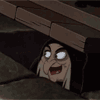
25 notes
·
View notes
Photo

John Wesley Gilbert
Born into slavery in rural Georgia, John Wesley Gilbert (1863-1923) rose to national prominence as a scholar, teacher, community leader, and Christian missionary. During 1890-91, he was the first African American member of the American School of Classical Studies at Athens. He was among the first 50 Americans of any race, ethnicity, or background to conduct professional archaeological work in Greece.
For much of the 20th century, Gilbert was best known for his 1911-1912 mission to the Belgian Congo with white bishop Walter Russell Lambuth of the Methodist Episcopal Church, South or MECS (the MECS has since become part of the United Methodist Church). Gilbert's 1890-1891 sojourn in Greece at the American School of Classical Studies at Athens, in contrast, often received passing word but never serious study. In 2011, the newly founded Society of Black Archaeologists recognized Gilbert as the first professionally trained African American archaeologist. Today, he is often called "the first black archaeologist." Yet his life, and especially his year in Greece, has never received the in-depth exploration it deserves, until now.
Lost Records
No one was sure how the fire started. In the pre-dawn hours of 3 August 1968, flames swept through Haygood Memorial Hall, the main building of historically black Paine College in Augusta, Georgia. Bystanders gathered to watch helplessly as the blaze climbed up, engulfing Haygood's famous clock tower, which for nearly 70 years had rung out the hours loud enough to be heard across town. The structure was still smoldering at sunrise. The clock tower stood but was too damaged to save and had to be pulled down. Inside was devastation. Though fireproof cabinets protected recent student records, the offices of Paine's president and vice president were destroyed, along with a priceless collection of African artifacts. Many of the school's early catalogues, newspapers, and other records also perished.
Author Promotion
Continue reading...
35 notes
·
View notes
Text

Mixed Pickles
-First Methodist Episcopal Church Cook Book 1897
Sorry for the long absence, I've been writing books and can't seem to stop. The recipe books glare at me from the shelves, languishing, as I have abandoned them for fiction. I will endeavor to do better. (I will not though.)
16 notes
·
View notes
Text
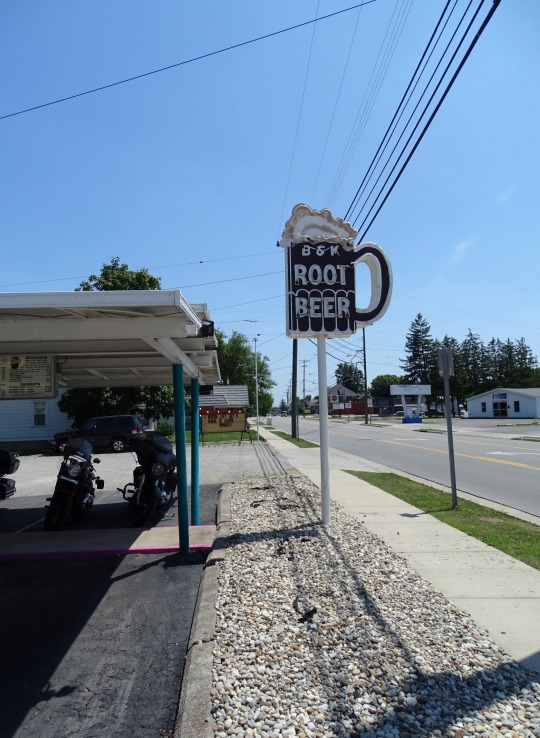





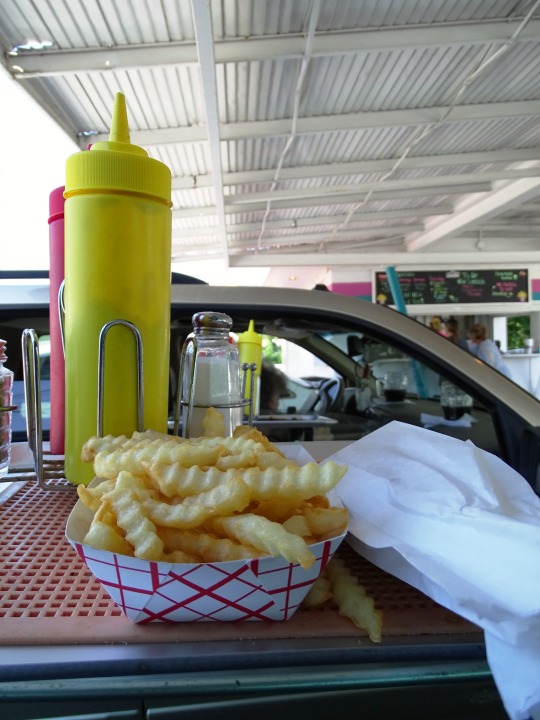




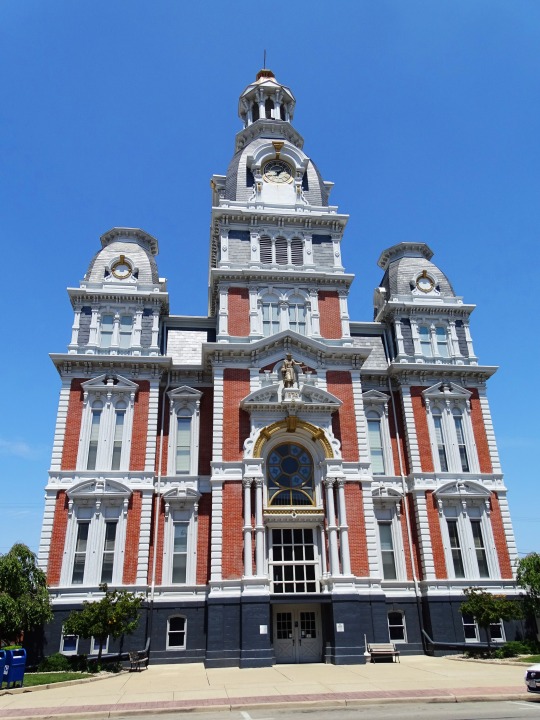
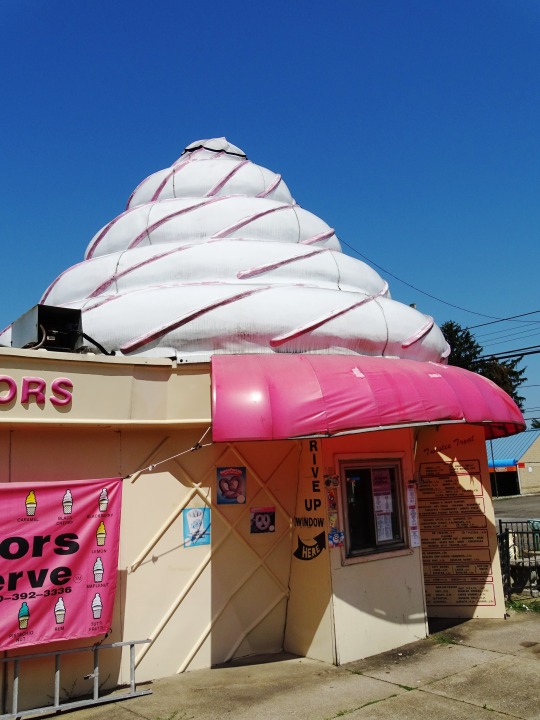



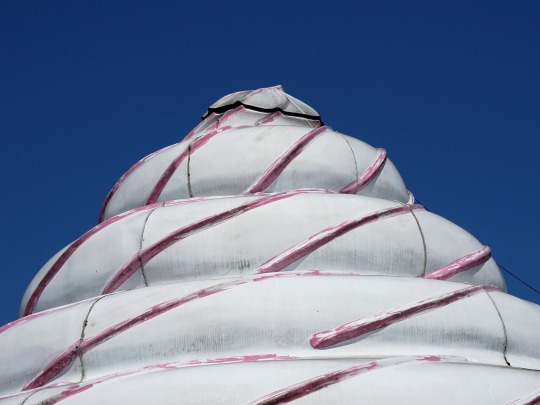


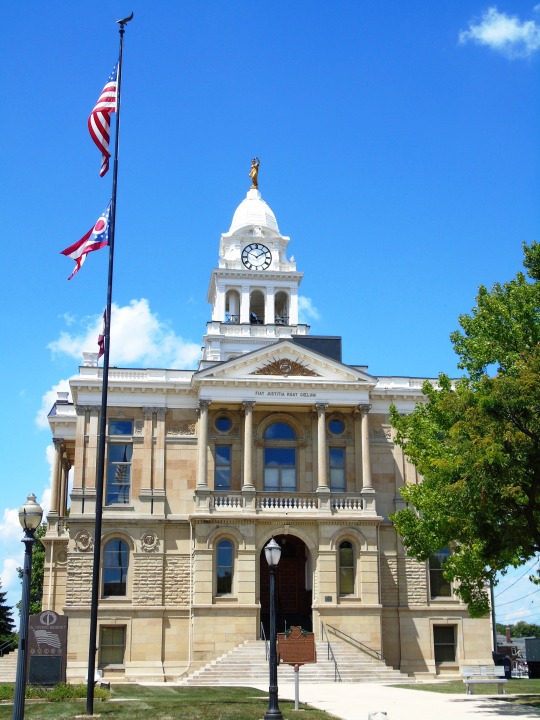


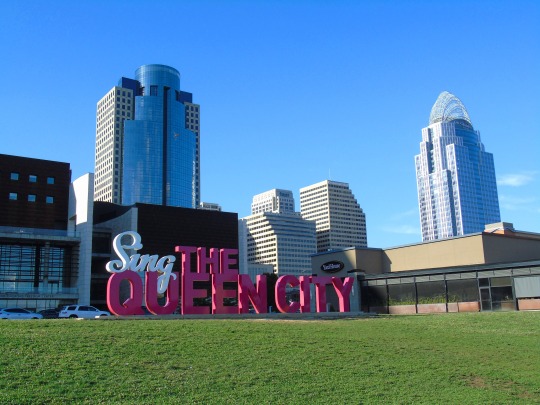
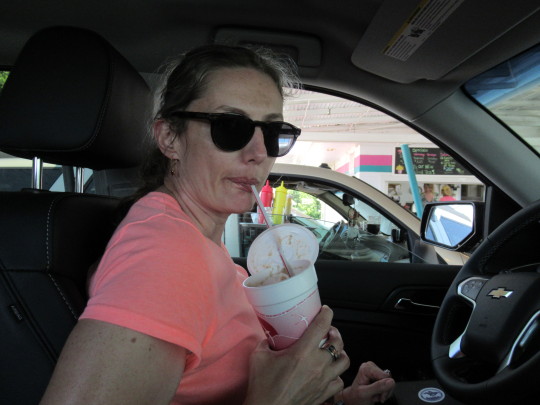
Ohio became 17th state of the Union on March 1, 1803.
#Van Wert#B & K Root Beer Stand#Van Wert County Courthouse#Ohio#USA#17th US state#1 March 1803#First Methodist Episcopal Church#Massillon#Midwestern USA#summer 2019#2016#landscape#countryside#cityscape#architecture#Tyler Davidson Fountain#Cincinnati#landmark#tourist attraction#Covington and Cincinnati Suspension Bridge#John A. Roebling Suspension Bridge#Sing the Queen City#Columbus#Fayette County Court House#Grove City#Miami Conservancy District#US history#anniversary#travel
0 notes
Note
Do you think they should make a Mormon pioneer American Girl?
Would I personally get a kick out of this? Yes. Do I actually think they should? Probably not.
First of all, pretty much all AG historical dolls have to navigate complex and difficult historical topics at least to some extent. Some have done it more successfully than others. For instance, Felicity was my favorite historical character as a child and I still like her as a character and enjoy her books, but they don't handle slavery well at all. I think creating a book series and a collection that talks about Mormon history in a way that is a) historically accurate and sensitive b) appeals to LDS families, who would likely be the primary audience and overwhelming majority of doll purchasers for this hypothetical character c) maybe even appeals to a broader market would be a really tall order.
Also, assuming that by "Mormon pioneer doll" you mean a character who comes to Utah in one of the first waves of migration in the mid-to-late 1840s or early 1850s, that is very close in era to Kirsten, whose stories begin in 1854, and who is also a frontier settler. There would likely be a lot of overlap between Kirsten's collection and this hypothetical doll's, as well as in the period details in the books. So this begs the question of how much this doll's inclusion would add to the overall AG historical characters canon. Of course, a major focus in Kirsten's books is her immigration story and her Swedish heritage (though, actually, you could write Utah Pioneer Doll as Scandinavian too given how much LDS conversion there was in that region during this period. That would create even more overlap with Kirsten's story, though.) By contrast, a major focus in Hypothetical Utah Pioneer Doll's story would likely be her religion, and this would be something that would be unique to her.
I wouldn't say that AG has shied away entirely from addressing religious faith and practice with their historical dolls. After all, for most of the classic six-book historical character series, the third book is centered around Christmas celebrations (for Rebecca, the focus is on Hanukkah instead and for Kaya her book series is structured differently than those of the other girls and I am not sure there's a holiday book at all.) In terms of the girls whose books I've reread most recently, Addy's church attendance is mentioned frequently in almost all her books and it's probably more thematically central than for most of the other Christian historical characters. Addy's denomination is also explicitly mentioned in the text (her family attends an African Methodist Episcopal church), while for many other characters it is more implicit. (For instance, Felicity is likely Anglican and Kirsten is almost certainly Lutheran, but neither is directly said in text to my knowledge.) It's been more than 15 years since I read Josefina's books, but I remember church attendance being mentioned more prominently in them as well. (Josefina is Catholic, though again I don't remember if this is explicitly stated the text of the stories.) If AG was to create a Mormon historical doll, her religion would have to be explicit and centralized in the text in a way that is very unusual for them.
But not completely unheard of, which brings me to another doll/storyline that is very relevant in this discussion: Rebecca. Rebecca was the first and, for a very long time, the only Jewish doll. The recently added 1990s twins are also Jewish, though it sounds like religion is comparatively deemphasized in their books, and they're much more secular. (This is a pattern with the more recent historical dolls, by which I mean both the ones created more recently and the ones whose stories are set in the more recent historical past.) I think Rebecca is the character for whom religion is the most prominent in her story (though, of course, because Judaism is an ethno-religion her stories address both her ethnic heritage and religious traditions in tandem, which makes it feel even more central.) She was also (again, until the twins were created) the only historical character who is a member of a religious minority in both a modern and historical sense. That is, in Rebecca's era Jewish Americans were a religious minority and they still are today. I think you could argue that as a Native American Kaya is sort of also a religious minority but I don't think that makes sense in the context of her time. For Catholic historical characters (Josefina, Cecile, and Marie-Grace), I think Catholics were a religious minority in the 19th century but given that it's currently the largest Christian denomination in the country that is no longer applicable. (Also, all three of those characters live in regions and eras where Catholics are the majority. I suppose if we count Best Friend dolls, the presumably-Catholic Irish Nellie is the only doll who would have lived in a context where Catholics were in fact a religious minority.)
Obviously, Mormons are Christians--or not so obviously, I suppose, given that a lot of other Christian denominations do not think they are. But they believe they are a Christian denomination, and I think that matters. Whereas obviously Jewish people are a religious minority in the sense that they are very much not Christians. But I do think Mormons were in the past and continue to be a religious minority (and the fact that they have historically troubled the boundaries of Christianity and been excluded from that by a lot of more mainstream Christians definitely contributes to that.) In the modern day, the statistics in terms of percentage of the American population are similar to Judaism, actually. There are slightly fewer Mormon Americans, about 1.5-2 percent of the population, whereas Jewish Americans are about 2-2.5 percent (though this includes people who identify as Jewish but not religiously observant.)
I feel like I'm rambling here, sorry. The point I was trying to make is that with Rebecca we do have an example of a historical doll who is a member of a (both historical and contemporary) religious minority and that minority is of relatively comparable size to Mormonism. Though I think in some ways a Jewish historical doll might be a more likely purchase for non-Jewish families than a Mormon historical doll would be for non-Mormons? I don't know if I can necessarily articulate why, though. Just a feeling. In terms of other differences I can't necessarily articulate--when Rebecca was released, having a historical character who was an Eastern European Jewish immigrant to New York City in the early 1900s felt like almost an obvious choice, as well as a necessary one. And if Rebecca hadn't been introduced, not having a Jewish historical doll would feel like a major oversight. On the contrary, if AG announced a Mormon historical doll I would be genuinely shocked. Like, knock me over with a feather shocked. I also don't feel like the lack of inclusion is a huge oversight in the way that not having a Jewish doll would be. (And, frankly, in the way the fact that they still don't have an Asian American historical doll is).
That being said, I definitely don't want to portray Mormonism as entirely inconsequential or peripheral to American history, as I don't believe it is. Mormonism is by far the largest religious tradition that originated in America and I think it overlays in really interesting ways with broader American historical issues like Westward expansion as well as issues around race, gender, religious freedom, and the boundaries of citizenship. I do think that a Mormon AG doll could potentially be very interesting. I also think it would be controversial and difficult to do well (by whatever standard "doing well" would be.)
#THIS GOT DELETED WHEN MY COMPUTER CRASHED HALFWAY THROUGH SORRY#i had to rewrite the first half i hope it's not too confusing
33 notes
·
View notes
Text
A judge has awarded a historic Black church in Washington control over the Proud Boys trademark after the far-right group defaulted on a $2.8 million judgment. The Monday ruling in D.C. Superior Court grants rights to the trademark of the group’s name to the Metropolitan African Methodist Episcopal Church and bars the Proud Boys members from selling any merchandise with its name or symbols without the church’s consent. The ruling also allows the church to try to seize any money made from selling the group’s merchandise. The church filed the lawsuit to try to recoup damages from vandalism made by group members after a December 2020 pro-Donald Trump rally. Black Lives Matter banners were torn down and burned at two churches, including Metropolitan African Methodist. There were also violent clashes between opposing protesters and arrests were made that night. Enrique Tarrio, then the leader of the Proud Boys, confessed to participating in the burnings and was later sentenced to more than five months in jail on those and other charges. Tarrio was later sentenced to 22 years in federal prison for orchestrating the Jan. 6, 2021, riot. On his first day in office, President Donald Trump granted pardons, commutations or vowed to dismiss cases against the 1,500-plus people charged with crimes in the Jan. 6 attack on the Capitol— including Tarrio.
14 notes
·
View notes
Text
Proud Boys Lose Control of Their Name to a Black Church They Vandalized
A judge awarded the trademarked name and symbols to a Washington church to help satisfy a $2.8 million judgment against the far-right group.
The Proud Boys no longer have control over their own name.
Under a ruling by a Washington judge on Monday, the infamous far-right group was stripped of control over the trademark “Proud Boys” and was barred from selling any merchandise with either its name or its symbols without the consent of a Black church in Washington that its members vandalized. In June 2023, the church won a $2.8 million default judgment against the Proud Boys after the organization’s former leader, Enrique Tarrio, and several of his subordinates attacked it in a night of violence after a pro-Trump rally in December 2020.
The ruling by the judge, Tanya M. Jones Bosier of the Superior Court of the District of Columbia, effectively means that Proud Boys chapters across the country can no longer legally use their own name or the group’s traditional symbols without the permission of the church that was attacked, the Metropolitan African Methodist Episcopal Church.
The ruling also clears the way for the church to try to seize any money that the Proud Boys might make by selling merchandise like hats or T-shirts emblazoned with their name or with any of their familiar logos, including a black and yellow laurel wreath.
In a lengthy statement, Mr. Tarrio said the church should have its nonprofit status revoked and Judge Bosier should be impeached. “Their actions are a betrayal of justice,” he wrote, adding, “I hold in contempt any motions, judgments and orders issued against me.”
The initial judgment against the Proud Boys determined that Mr. Tarrio and other members of the group had climbed over a fence surrounding the church, which is just blocks from the White House, and burned a Black Lives Matter banner it was flying. The episode took place after a violent clash between supporters and critics of President Trump.
The church called the Proud Boys’ actions “acts of terror” in its lawsuit and said they had been meant “to intimidate the church and silence its support for racial justice.” A judge agreed, calling the Proud Boys’ conduct “hateful and overtly racist.”
When the Proud Boys failed to turn over any money, lawyers for the church sought to satisfy the judgment by seizing control of the trademarked name and by enjoining the group from “selling, transferring, disposing of or licensing” any merchandise using the words “Proud Boys” or any of the organization’s symbols.
The ruling was handed down as the Proud Boys were riding high after Mr. Trump, in one of his first official acts in his return to the White House, included Mr. Tarrio and several of his lieutenants in his sweeping act of clemency to all of the nearly 1,600 people prosecuted in connection with the attack on the Capitol on Jan. 6, 2021.
Mr. Tarrio, who was serving a 22-year prison term on charges of seditious conspiracy, received a full and unconditional pardon from Mr. Trump. His four co-defendants had their own prison terms commuted to time served.
The banner-burning episode had a dramatic effect on the events of Jan. 6. It led to Mr. Tarrio’s arrest on vandalism charges as he returned to Washington on Jan. 4, 2021. As part of the case brought against him, he was kicked out of the city and was in Baltimore when his subordinates took part in the storming of the Capitol.
On the night the banner was burned, another Proud Boys leader, Jeremy Bertino, was stabbed on the street during a clash with leftist counterprotesters.
One lingering effect of that episode was that it turned the Proud Boys against the police after years of having troublingly close relationships with officers across the country. Another was that Mr. Bertino eventually became a government witness and testified against his compatriots at the trial of Mr. Tarrio and his co-defendants.
by Alan Feuer
7 notes
·
View notes
Text

Pastor Thomas McCants Stewart (December 28, 1853 - January 7, 1923) was born in Charleston, South Carolina to George Gilchrist and Anna Morris Stewart. He attended the Avery Normal Institute before enrolling in Howard University. Although only fifteen when he arrived on Howard’s campus, he distinguished himself as a student and contributed occasional articles to the New National Era, an African American newspaper.
He grew increasingly dissatisfied with the quality of instruction at Howard and became one of the first Black students to enroll in the University of South Carolina. He graduated with a BA and LLB.
He married Charlotte Pearl Harris and taught mathematics at the State Agricultural and Mechanical College in Orangeburg. He joined the law firm of South Carolina Congressman Robert Brown Elliott. He became an ordained minister in the African Methodist Episcopal Church and three years later was appointed pastor of the Bethel AME Church in New York.
He emerged as a national civil rights leader, respected attorney, and writer. He migrated to Liberia to serve as a professor at Liberia College. He returned to New York and wrote about his African experience in Liberia: The Americo-African Republic (1886).
He relocated to Hawaii. He hoped to advance his legal practice. He moved to London, England, and returned to Liberia, where he was appointed an Associate Justice of the Liberian Supreme Court. His criticism of Liberia’s president resulted in his removal from the court.
He returned to London, where he hoped to live out the remaining years of his life, he moved to the Virgin Islands. Regarded as an elder statesman, he established a legal practice with Christopher Payne, one of the island’s most experienced attorneys. #africanhistory365 #africanexcellence
7 notes
·
View notes
Text

Vincent Townsend Jr. was the first African American to portray a judge on Perry Mason in the episode, The Case of the Skeleton's Closet. I love that they did that because back then, it was unusual to see a black man playing a judge. Once again, Perry Mason is all inclusive in their casting choices. It's odd that although Mr. Townsend appeared on the show as a judge, he's not listed in the credits. At least, it was a move in the right direction. He didn't speak any lines in that role, but I'm glad that they had him seated on the bench. Mr. Townsend was a real life judge in Los Angeles, California, and he was, also, a minister in the First African Methodist Episcopal Church, also in L.A.. This was a big step for the civil rights movement.

#Vincent Townsend Jr#Perry Mason#black Judge#first African American judge#real life judge#real life minister#Los Angeles#California#big step#civil rights movement#all inclusive#well done#love#joy#happiness#thank you#sharing#50s TV#black and white tv#i love Perry#great show#classic TV#forward thinking
12 notes
·
View notes